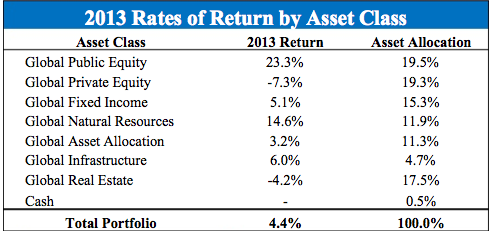CalPERS’ decision to pull out of hedge funds is having a ripple effect across the country.
On Wednesday, Pennsylvania Auditor General Eugene DePasquale released this skeptical statement on the state pension system’s hedge fund investments:
“Hedge fund investments may be an appropriate strategy for certain investors and I trust that SERS and PSERS weigh investment options carefully,” DePasquale said in a statement. “But, SERS and PSERS are dealing with public pension funds that are already stressed and high fees cost state taxpayers more each year. I support full disclosure of hedge fund fees paid by our public pension funds and we owe it to taxpayers to ensure that those fees do not outweigh the returns.”
Spokespeople for both the State Employees Retirement System (SERS) and the Public School Employee Retirement System (PSERS) have now responded. The consensus: the pension funds will not be cutting their hedge fund allocations.
From Philly.com:
SERS has no plans to cut hedge funds further. “Hedge funds play a role in our current board-approved strategic investment plan, which was designed to structure a well-diversified portfolio,” SERS spokeswoman Pamela Hile told me. With many more workers set to retire, hedge funds (or “diversifying assets,” as SERS prefers to call them) combine relatively steady returns with low volatility “over varying capital market environments.” By SERS’s count “difersifying assets” are now down to $1.7 billion, or 6% of the $28 billion fund and returning 10.7% after fees for the year ending June 30, up from a 10-year average of 7.4%.
Says PSERS spokeswoman Evelyn Williams: “We agree with the Auditor General that hedge funds are appropriate for certain investors. Not all investors can or should invest in hedge funds. Clearly CALPERS reviewed their hedge fund allocation and acted in their own fund’s best interests.
“PSERS also sets our asset allocation based on our own unique goals and issues. We do not have any immediate plans to change our hedge fund asset allocation at this time… PSERS’ hedge fund allocation provides diversification for our asset allocation and is specifically structured so it does not correlate with traditional equity markets…PSERS hedge fund allocation has performed as expected and provided positive investment returns over the past fiscal year, one, three, and five years.”
SERS allocates 7 percent of its assets, or $1.9 billion, towards hedge funds. PSERS, meanwhile, allocates 12.5 percent of its assets, or $5.7 billion, towards hedge funds.
Photo by





